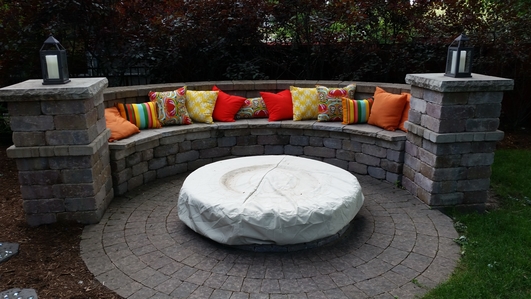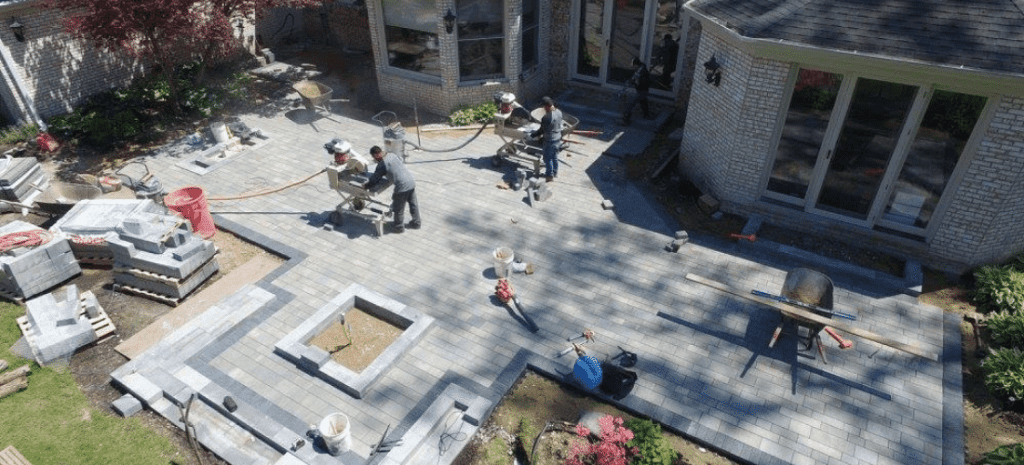1. What is paver restoration, and how long does the process take?


Complete paver restoration cleans the pavers of dirt, grime, and debris; this process also includes cleaning some of the sand between the pavers. Pavestone will replace old sand with new sand and then seal the pavers. Depending on the condition of your pavers, some tasks may be eliminated. The time frame for paver restoration will be two days depending on the choices made by the customer. While the details of sanding and sealing are discussed more in detail below, it is safe to assume that if traditional sand and no sealer are requested, the process can be accomplished in one day. However, if polymeric sand is requested, regardless of whether a request for sealing or not, the process will take two days. Due to the fact that paver and paver joints must be dry if they are being re-sanded and seal-coated, weather conditions dictate time frames as well which can extend the process up to one week.
2. When do pavers need resanding? What is the difference between polymeric sand vs. traditional sand? What does Pavestone recommend?
Sand stabilizes the pavers and prevents their movement, but pressure washing pavers causes the removal of the fine sand from in between the paver joints. To ensure stability, resanding, which is the process of placing new, clean sand back in the joints to replace the previously displaced sand, is required. Currently, resanding can be done with two types of sand: traditional or polymeric. Typically, traditional sand produces the best results.
No matter what type of sand is used, your paver structure is moving (settling, edge problems, etc.). There is NO sand, locking agent, or sealer which will last forever or not crack over time.
3. What does sealing do for pavers?
Sealing is meant to help protect pavers from the elements (rain, sun, etc.) while also providing further protection from falling foreign objects. Sealing creates a protective barrier on the top of the pavers that repels water while preserving the natural beauty of the pavers for years to come. Unfortunately, sealing does not prevent ants from coming up through the paver joints, but it has been known to prevent weeds while not eliminating them entirely.
4. What kinds of sealers/finish can be applied to pavers?
Two choices exist for finishes when sealing pavers: a glossy “wet-look oil-base” or a “water-base natural-look.” The “wet-look oil base” is NOT recommended by Pavestone. If a wet-look sealer is applied with even the smallest amount of moisture or water in between the paver joints or on the paver, it may leave you with a white haze on the pavers which becomes very difficult to remove and in some cases, may cause the pavers to be replaced. The “wet-look sealer” is typically an oil-based solvent and will NOT mix with a water-based sealer. However, if your existing pavers were previously sealed with oil, then an oil-based sealer should be reapplied.
5. Why does Pavestone recommend a “water-base natural look” for sealing?
These sealers create a light sheen matte finish to your pavers. Not only will this look better, but the natural-look sealer contains polymers that act as a joint stabilizer, so the sand joints harden much like a polymeric sand. Additionally, a water-base joint stabilizer sealer is a lot more forgiving than an oil-base sealer, and water-base sealers can be applied to damp paver joints or surfaces. For all of the reasons and more, Pavestone recommends a high quality water-base sealer for all brick pavers.
6. How often should pavers be sealed?
Depending on weather exposure, primarily the sun, and traffic, a good sealing job (done correctly) with good product (chosen and applied correctly) should last between two and three years. Walkways and patios on the north side of a property will last longer than driveways and high-traffic areas located on the south side of a property.
Pro Tip:
It is important to care for your new brick paver project as you would for any other outside element of your home. Pavestone recommends that you not exceed 3-4 applications of sealer in a 15-20 year time frame.











